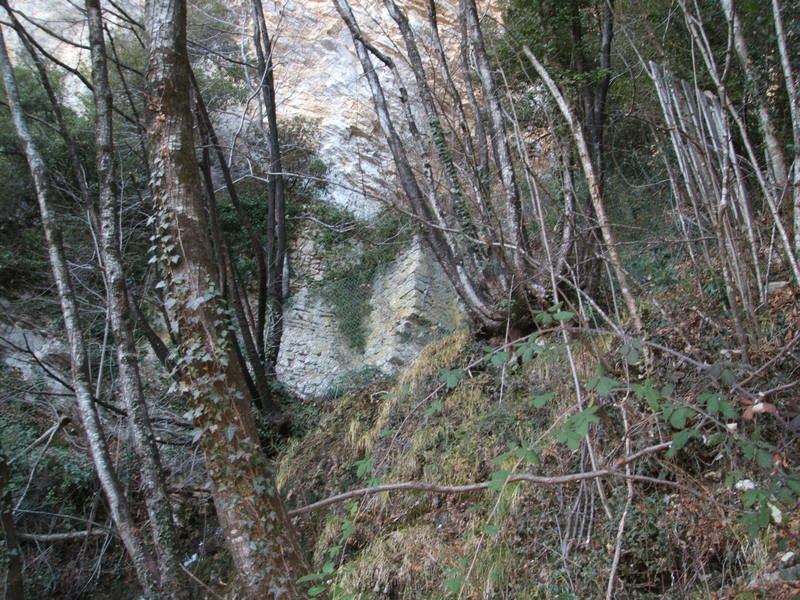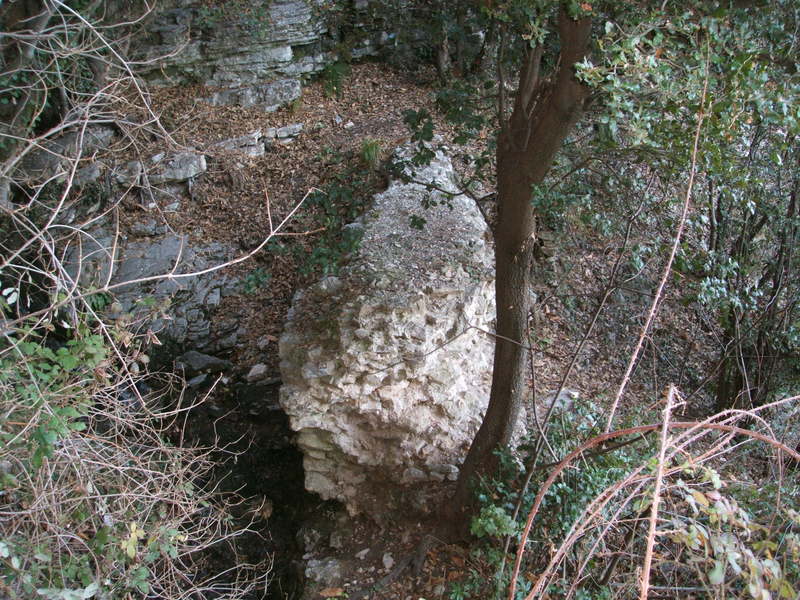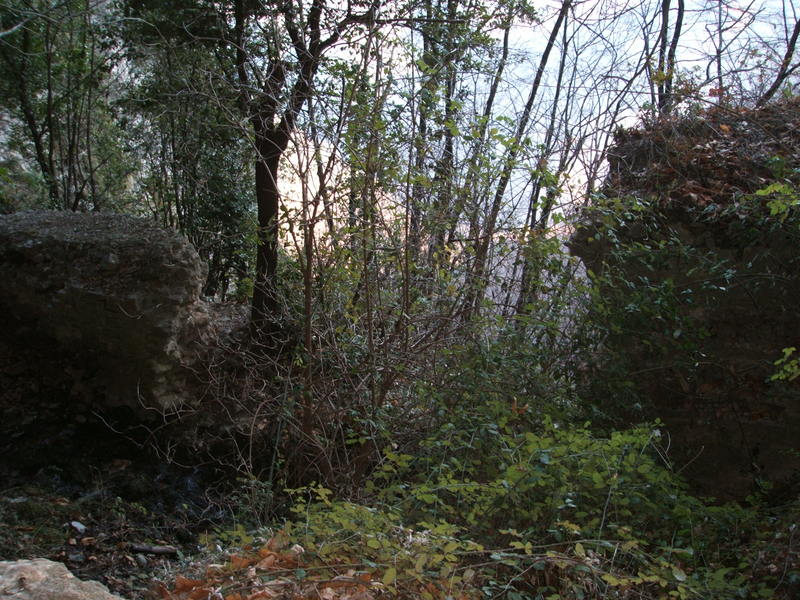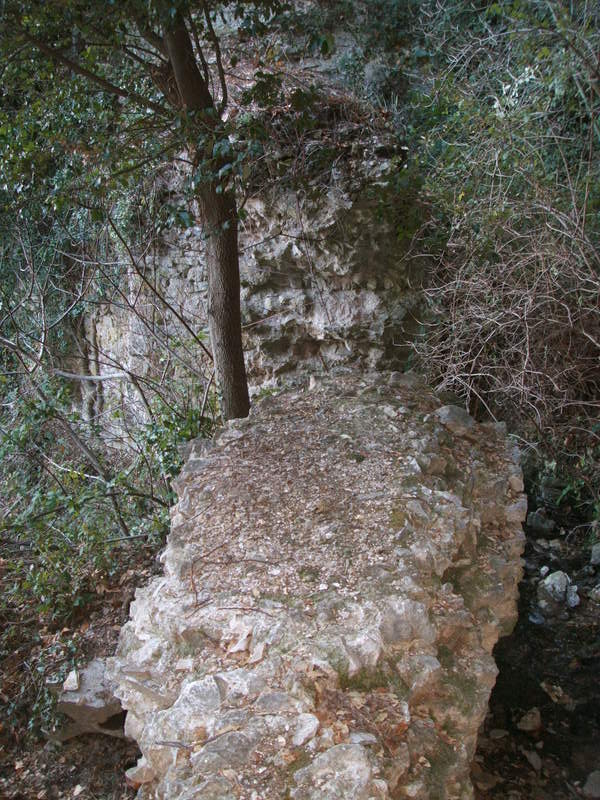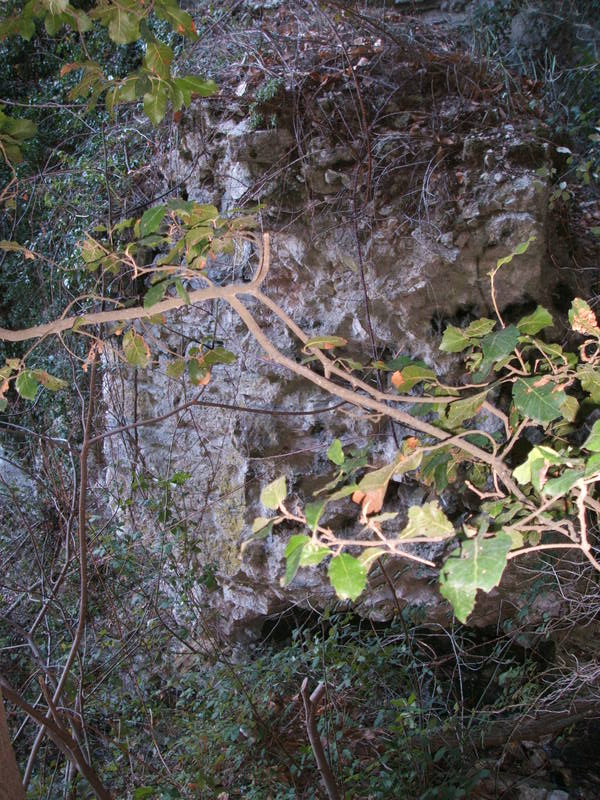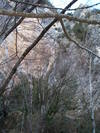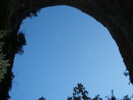|
"As the brief
but steep climb came to an end we found ourselves in front of a strong,
good-sized wall extending from one side to the other of the bosom-shaped
section of mountain inside which is the opening of the cave. Almost halfway
along this wall we found what appeared to be the remains of a great door or
gate, as on the left was a gatepost inclined to the south which seems to have
been built to hold an attached locking mechanism. Indeed some of the locals
asserted that there had once been a great iron hinge there which today is no
longer apparent. The wall is partly ruined, and that which is now in existence
has a height somewhat below that of the cavern entrance; at its base it is 2.40
metres across and it narrows to 1.80 metres at the top. It is 21.60 metres long
and appears to be constructed from stones and sand found near the cave."
... A rather more serious difficulty, raised by Giovanni Magri, lay in defining the epoch during which that great wall had been erected. In truth, observed thus with the naked eye, it all seems to be mediaeval and the material of its construction and its shape seem to be not unlike the walls of Barga and nearby castles which certainly do not go back to ancient times. However Targioni Tozzetti , who inspected this mountain and possibly also this cave, says (vol. 5 p. 229) that he observed vaults and the remains of an ancient wall which Pacchi , without any need to go back to the times of the Apuan Ligures, believes is in all probability the remains of the ancient fort that existed therein, or the manufactories made therein subsequently (Pacchi Diss. XIX). |
